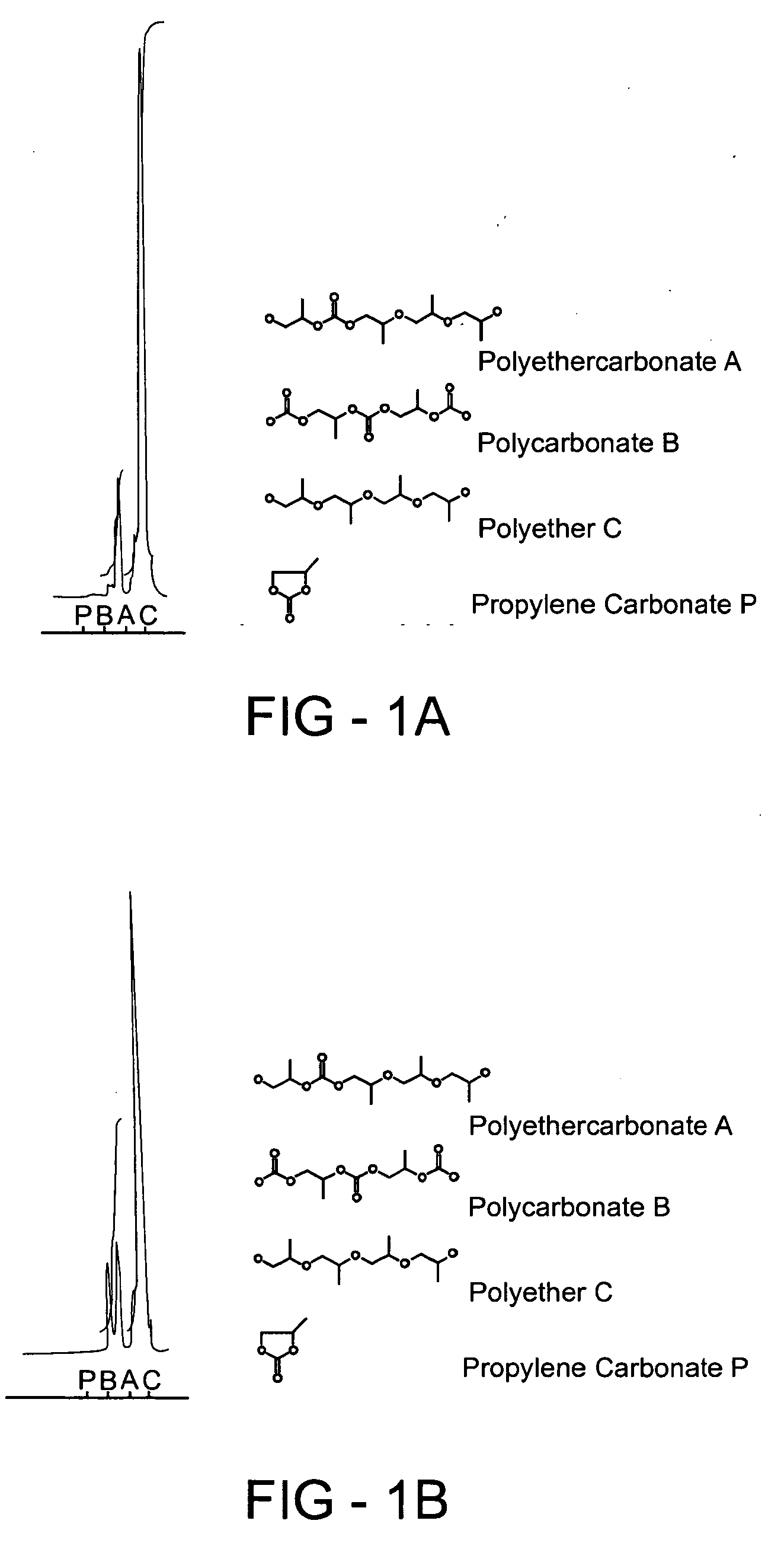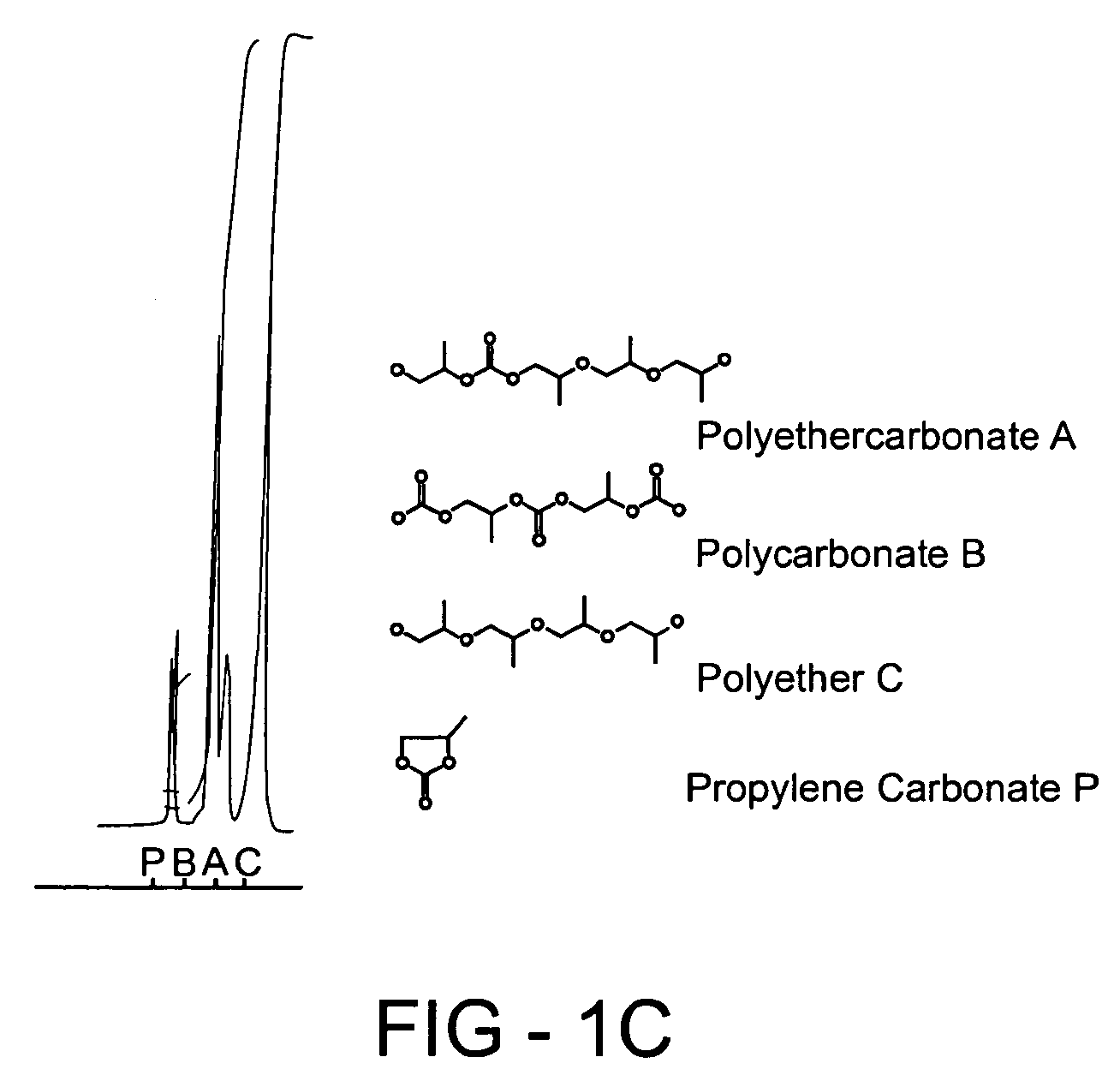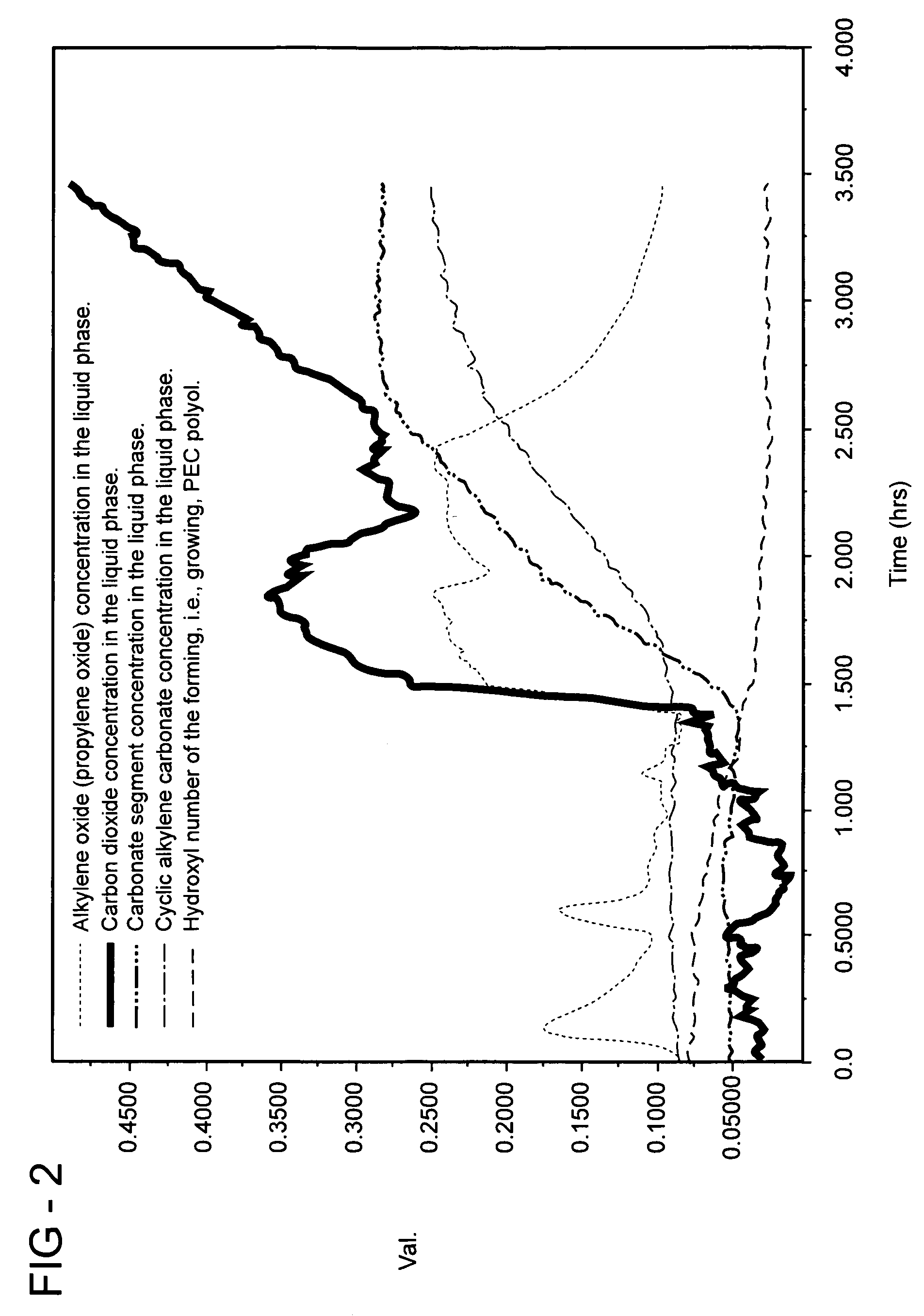Method of forming a polyethercarbonate polyol
a polyethercarbonate and polyol technology, applied in the field of forming a polyethercarbonate polyol, can solve the problems of low catalyst activity, low productivity, wide array of difficulties, etc., and achieve the effects of reducing equipment costs, reducing formation extent, and effective incorporation
- Summary
- Abstract
- Description
- Claims
- Application Information
AI Technical Summary
Benefits of technology
Problems solved by technology
Method used
Image
Examples
examples
[0060] A catalyst including the multimetal cyanide compound was prepared as described below.
Preparation of Hexacyanocobalfic Acid
[0061] An amount of 7 liters of strong acid ion exchanger in the sodium form (Amberlite® 252 Na, Rohm & Haas) was introduced into an ion exchange column (length: 1 m, volume: 7.7 l). The ion exchanger was subsequently converted into the H form by passing 10% strength hydrochloric acid through the ion exchange column for 9 hours at a rate of 2 bed volumes per hour, until the sodium content of the discharged solution was less than 1 ppm. The ion exchanger was subsequently washed with water until neutral. The regenerated ion exchanger was then used to prepare a hexacyanocobaltic acid which was essentially free of alkali metal. For this purpose, a 0.24 molar solution of potassium hexacyanocobaltate in water was passed through the ion exchanger at a rate of 1 bed volume per hour. After 2.5 bed volumes, the feed was changed from potassium hexacyanocobaltate s...
PUM
| Property | Measurement | Unit |
|---|---|---|
| Temperature | aaaaa | aaaaa |
| Temperature | aaaaa | aaaaa |
| Fraction | aaaaa | aaaaa |
Abstract
Description
Claims
Application Information
 Login to View More
Login to View More - R&D
- Intellectual Property
- Life Sciences
- Materials
- Tech Scout
- Unparalleled Data Quality
- Higher Quality Content
- 60% Fewer Hallucinations
Browse by: Latest US Patents, China's latest patents, Technical Efficacy Thesaurus, Application Domain, Technology Topic, Popular Technical Reports.
© 2025 PatSnap. All rights reserved.Legal|Privacy policy|Modern Slavery Act Transparency Statement|Sitemap|About US| Contact US: help@patsnap.com



